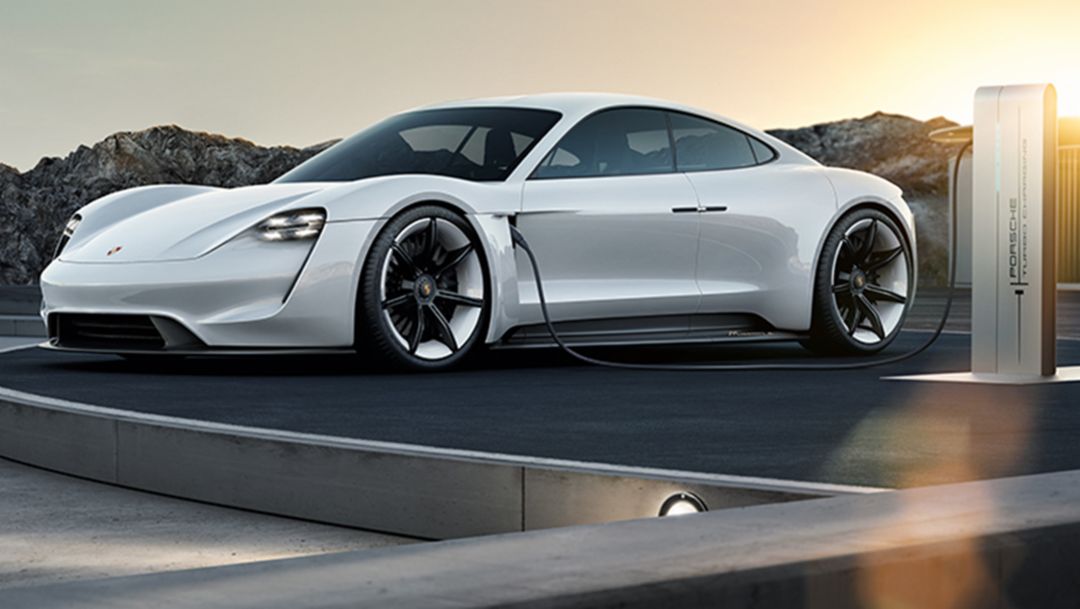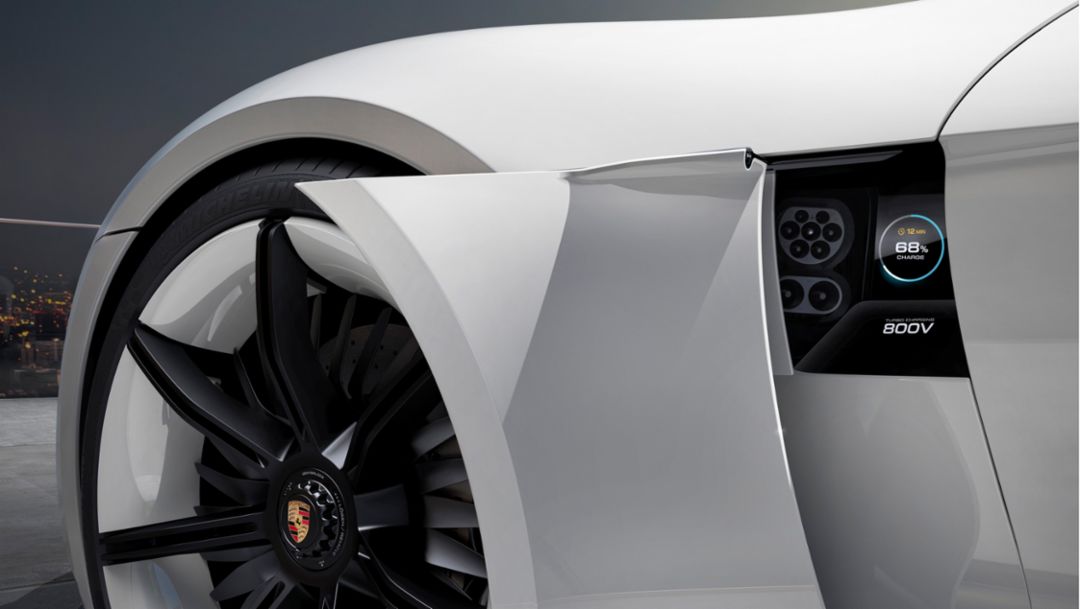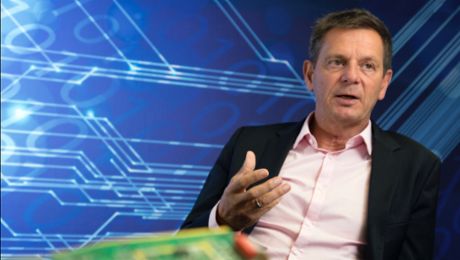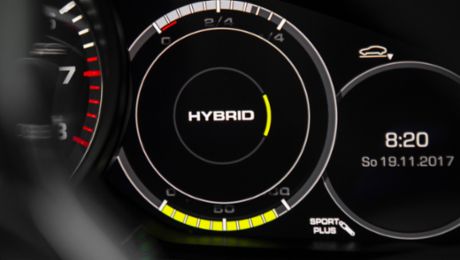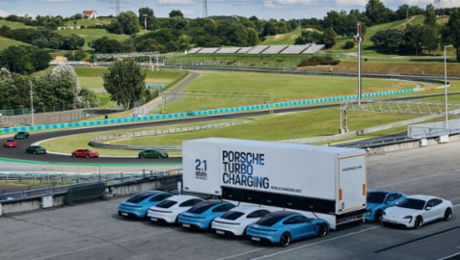1.3 trillion kilometres or, to use an example which is easier to grasp: 30 million orbits of the Earth in a single year. According to a study carried out by the European Commission, that’s how far EU citizens will travel in 2040. Even in 20 years’ time, three out of four of these journeys will still be carried out in a car. Mobility of this kind can no longer be achieved using combustion engines alone. Even at today’s level of mobility, which is around 30 per cent less than the projections, many European cities fall short of the EU’s environmental standards in relation to substances such as nitrogen oxides. The EU Member States, as well as other countries such as China, Russia, Brazil, India and Australia, have also committed to slashing their emissions. And, of course, we are all aware that reserves of fossil fuels are finite.
This contrasts with the demand for individual mobility, which appears to be infinite. Anyone who wants to meet this demand in the long term and ensure that comfort, safety and driving pleasure remain at least on a par with current cars will find no way around electrically-driven and emission-free powertrains. In addition to the well-known manufacturers, late entrants to the sector from other industries, suppliers and start-ups are working round the clock on the development of electric mobility.
Full power at the push of a button
Switch on and enjoy the silence – undoubtedly one of the attractions of electric powertrains. Manufacturers must do more, however, in particular those whose customers have become accustomed – after decades of combustion engine optimisation – to demanding the best. Their electric powertrains must guarantee the highest possible driving performance over long periods of time. Any manufacturer that masters this challenge will create a long-lasting buzz among customers – thanks to the strengths of the electric powertrain.
In principle, the electric powertrain has one huge advantage in terms of driving dynamics: Since its power can potentially be delivered immediately thanks to force-locking, the torque can be transferred to the wheels with only a short delay. This means that even small cars or compact vehicles can produce more powerful acceleration than their conventionally powered siblings.
Acceleration for experts
Particularly for newcomers to the automotive industry, these acceleration values are a strong sales argument – especially as most countries across the world impose strict speed limits which mean that potential top speeds or even high overall speeds are unachievable. The choice of the term “sales argument” in the preceding sentence was quite deliberate: anyone who steps on the gas several times in quick succession in one of the vehicles currently available on the market will notice that accelerative power is greatly reduced after the first few attempts. The same is true for the high overall speeds which are standard in countries like Germany. Stefan Weckbach, Head of Battery Electric Vehicles, has noted that accelerating from 0-100 km/h in less than three seconds places such heavy demands on the battery and engine that manufacturers cannot make them reproducible. Porsche has therefore put a great deal of work into the electric motors which will drive the all-electric car to be launched on the market in late 2019. “The reproducibility of performance and power is a matter of vital importance,” says Weckbach.
When used correctly, electric motors allow not only rapid propulsion but also special cornering dynamics: since the individual axles can always harness the full power of the motors, the all-wheel drive is supremely variable, and also allows tailored power distribution via the motors to the individual wheels depending on the driving situation. Torque vectoring with a continuously available full flow of power – a decisive advantage in terms of safety and sportiness, made possible by the best electric powertrains.
An unlimited range
One of the reasons why the combustion engine won out against the electric powertrain at the start of last century was because the fuel was readily available everywhere, as well as being lightweight and easy to use. One tank of fuel also gets you a long way. Thanks to new technical solutions, however, these advantages will no longer remain the exclusive preserve of diesel and petrol engines – they will also be enjoyed by owners of e-vehicles. Future technologies may also mean that drivers can recharge their vehicles on the go without even noticing.
Before her first test drives in the combustion-engine vehicles constructed by her husband, Bertha Benz had to think very carefully: where is the closest pharmacy? At the start of the age of petrol and diesel engines, in the late 19th century, cars could only manage short distances on one tank of fuel, and petrol stations did not yet exist. It is hardly surprising that it took some years for the public to be convinced of the merits of a personal motor car.
The industry has, however, since solved this problem more or less everywhere in the world. Car manufacturers have also developed engines which can travel up to 1,000 kilometres on one tank of fuel. In the age of e-mobility, this will also be possible – despite all the prophecies of doom and gloom. The mobility standards demanded by customers are those they are already familiar with from combustion engines. Power supply, range and charging durations for electrically powered vehicles are therefore key factors which must be turned to manufacturers’ advantage in order to create customer enthusiasm about e-vehicles for reasons other than their driving performance. The traditional automotive manufacturers, battery cell producers and also energy suppliers and government agencies are working hard to ensure that this can happen.
Ensuring a comprehensive supply of power is in itself a huge task; “Even if there are only one million e-vehicles in Germany, approximately 33,000 public and semi-public charging points will be required for everyday traffic, as well as approximately 2,600 public charging points for long-distance traffic. Up to 4,000 extra rapid charging points may also be useful depending on the design of the standard charging infrastructure and the desired security of supply.” This was the conclusion reached by an investigation carried out by the Institute of Transport Research at the German Aerospace Centre and the Karlsruhe Institute of Technology. We’re still a long way off that number, and Germany is only one country of many. Mobile individuals expect a similar level of supply across Europe, in China, Japan, Russia and the USA, and also in South America and Africa.
The industry has recognised that the energy transition on the streets can only be set in motion by working together. The manufacturers BMW, Daimler, Ford and the Volkswagen Group (including Audi and Porsche) have therefore founded Ionity, a joint venture aimed at laying the foundations for construction of the most powerful fast-charging network for e-vehicles in Europe. Ionity plans to set up and operate around 400 fast-charging stations by 2022. Other initiatives are pushing ahead with similar projects, sometimes on different continents and often with government backing.
The charging parks of the future will also be open to all cars, regardless of brand or charging type. This will be achieved through the CCS standard. The next decade will also see the increased and widespread emergence of cable-free charging systems, which operate on a similar principle to induction chargers for toothbrushes. They will allow drivers to charge their vehicles while waiting at traffic lights, while parked in a car park or even while driving along motorways. Specialists such as Qualcomm have already developed this technology to series-production level. Electronic payment systems at each charging point will also become standard.
According to Michael Kiefer, Head of High-Voltage Systems at Porsche Engineering, the new powertrains will only gain widespread acceptance once these facilities are in place. The expert adds: “To provide the customer with a seamless experience, the infrastructure must be in sync with what the vehicle can do.”
Porsche has therefore developed a special charging station for its high-performance vehicles. Its core strength is quick-charging technology featuring a voltage of 950 V and charging performance of up to 350 kW. Allowing drivers to “fill up” in less than 20 minutes. It goes without saying that these in-house developments comply with all international standards and are based on a standardised charging plug in the interests of compatibility, meaning that they can be used to charge any other commercially available e-vehicle.
Manufacturers are also tackling their third major challenge with vim and vigour: increasing the range which can be delivered by batteries. Even today, a range of 500 kilometres or more is no longer a pipe dream for electrically powered vehicles. To achieve such feats, however, current models require a very large and correspondingly expensive and heavy battery – on which more later.
For the foreseeable future, e-vehicles will continue to lag behind combustion engines in terms of power-to-weight ratio. Whereas the energy density in recently designed state-of-the-art lithium-ion batteries makes it possible to achieve up to 0.20 kW-hours per kilogram (kWh/kg), one litre of diesel delivers a value of 10 kWh/kg, which is 50 times better. The fact that the current is more efficient (by a factor of around three) cannot compensate for this difference. To achieve high ranges from realistic battery usage, e-vehicles will have to up their game in another dimension: by becoming much smarter than current vehicles.
Drive smart – drive electric
For example, when the driver looks at the OLED display in the Porsche Mission E, the display looks back. In the concept study, all five driver displays use eye-tracking technology to detect what the driver is looking at – and show the corresponding information. This is no gimmick. This technology helps drivers to anticipate problems, and also to develop an extremely energy-efficient driving style. Even today, many cars autonomously anticipate what is ahead on the road – and respond to driving situations happening many kilometres away or just around the next corner. They can do so thanks to navigation or swarm intelligence data.
An electric powertrain can use deceleration forces to recharge the battery. An intelligent solution to the problem of range. This intelligence is constantly growing, and will also integrate other smart technologies, such as smarter route planning, with a stop-off at a Porsche super-fast charger or the most direct route to an inductive charging road. In the future, it will become the norm for drivers to recharge whenever necessary and without interruptions. Intelligent technology will ensure that batteries are always in an ideal state of charge, i.e. between between 40 and 70 per cent. And if there’s a power cut at home, the e-vehicle can even keep the freezer running.
This technology has even wider significance in terms of the energy transition as a whole. A large fleet of e-vehicles could solve the problem of storing intermittent energy from wind, solar or hydropower generation peaks; the batteries of e-vehicles could therefore become an intelligent part of a country-wide smart grid.
Sustainable progress
The age of e-mobility will be accompanied by an energy revolution which is already taking shape in the sea, in the mountains or on thousands of roofs. As made clear by a study published by the “Zukunftsinstitut”, saying farewell to fossil fuels is the central tenet of the future economy and mobility. International commitments mean that greenhouse gas emissions from transport must be reduced by at least 60 per cent compared to 1990 levels by 2050 at the latest. Climate conferences underline this pressing need.
We are faced with a crucial choice: should zero-emission cars be powered by electricity from coal-fired power plants or renewable energy sources? According to a study by the Transport & Environment Organisation, electricity was the cleanest available fuel at the time the study was carried out in 2016. However, the study also found that an e-vehicle in Europe emits an average of 78 g of CO₂ per kilometre indirectly, for example as a result of the generation of electricity in coal-fired power plants. In countries which use a high proportion of coal, such as China, the figures are even gloomier. The calculations also omitted the energy required to manufacture the battery, which is currently a lot – according to a study by the Swedish Ministry for the Environment, the associated emissions are equivalent to those caused by driving a vehicle with a combustion engine for several years.
Yet even these challenges can be solved on a sustainable basis, and that is just what is happening: In 2016, 78.4 per cent of all newly installed power generation capacities in Europe were based on wind or solar. In the EU, wind energy is second only to natural gas as a source of energy. In this case too, e-mobility can show the way – for example through the consistent use of green energy for charging technology. This makes climate-neutral mobility a realistic prospect.

